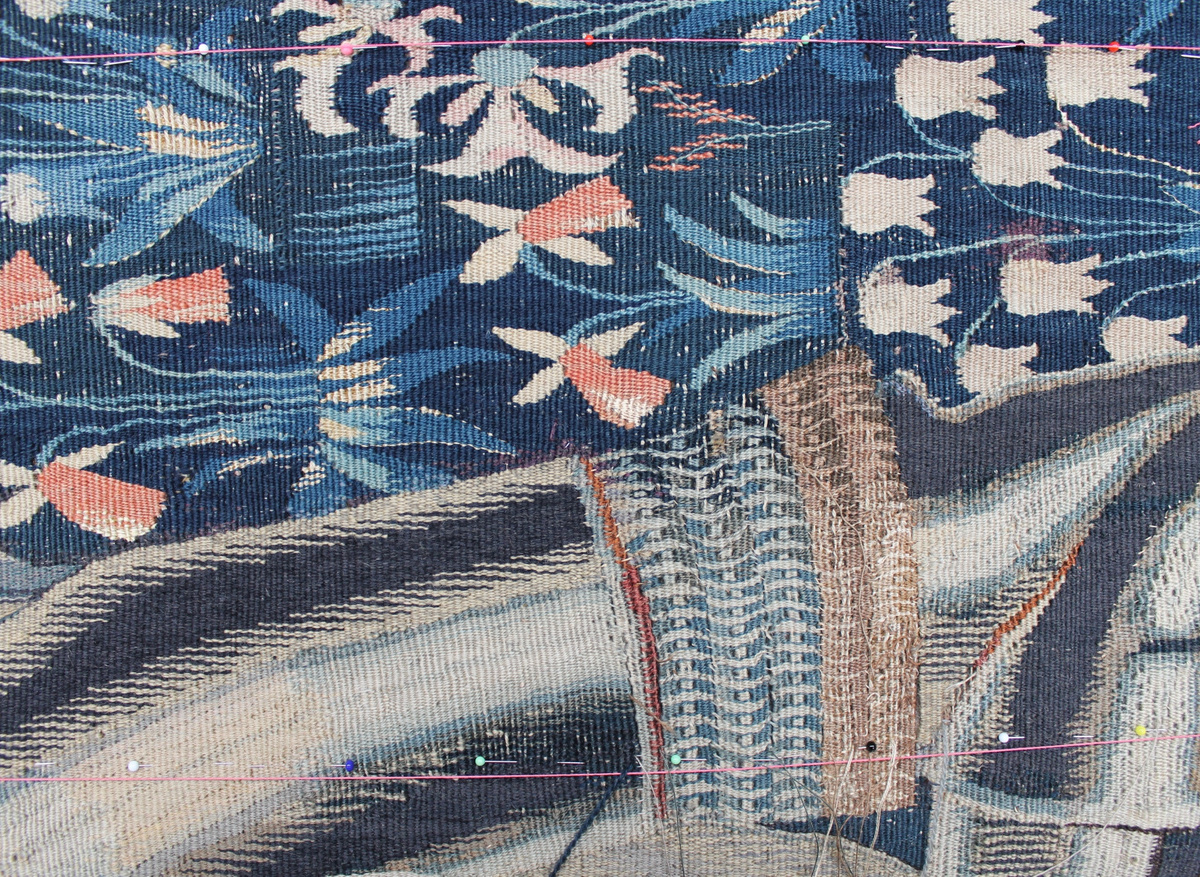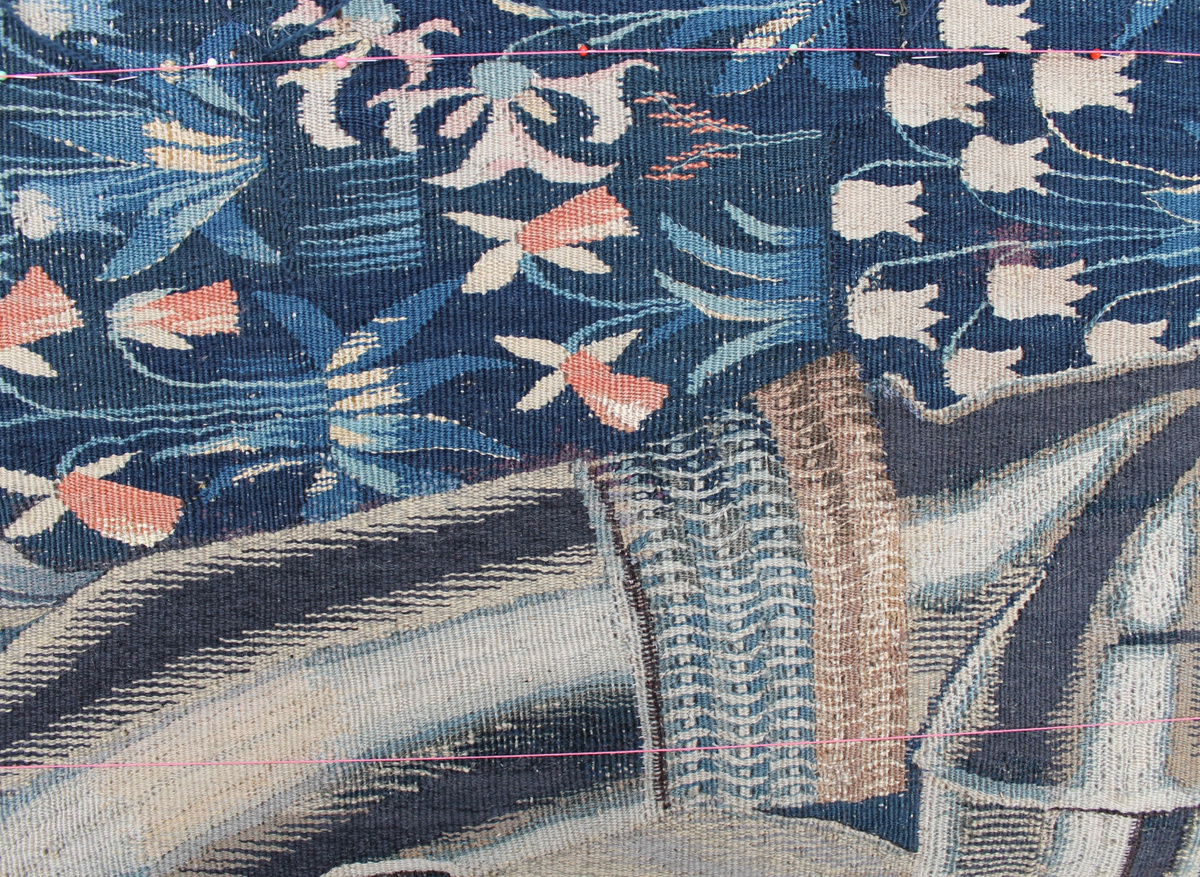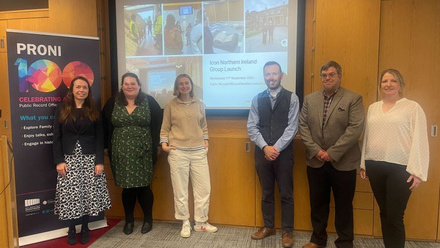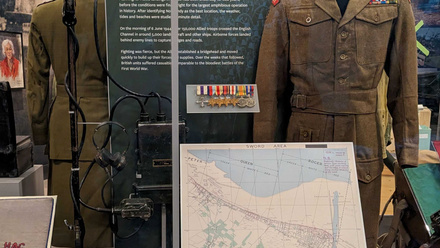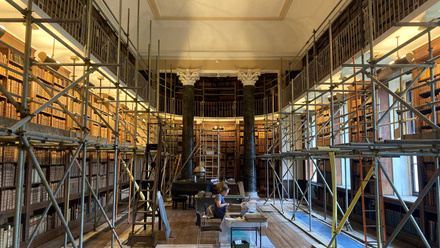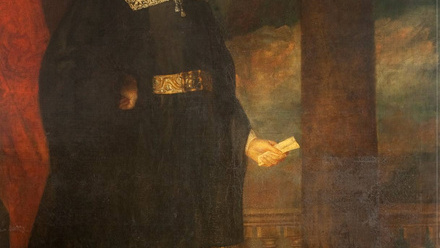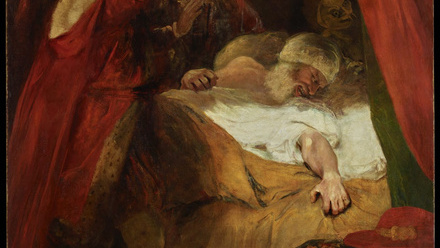Knight in shining armour: Conserving the oldest tapestry in the National Trust
If you got excited when you read The Guardian's piece on the display of the oldest tapestry owned by the National Trust, read on to find out about the fascinating 1,300 hours of work that went into the conservation of the piece. The Textile Studio Conservator and Icon member Yoko Hanegreefs reflects on the project.
A rare 15th century tapestry – the oldest in the National Trust collection – has recently returned to Montacute House after undergoing detailed conservation treatment at the National Trust Textile Conservation Studio in Norfolk. Conservators at the Studio spent a total of 1300 hours on documentation, cleaning and conservation stitching.
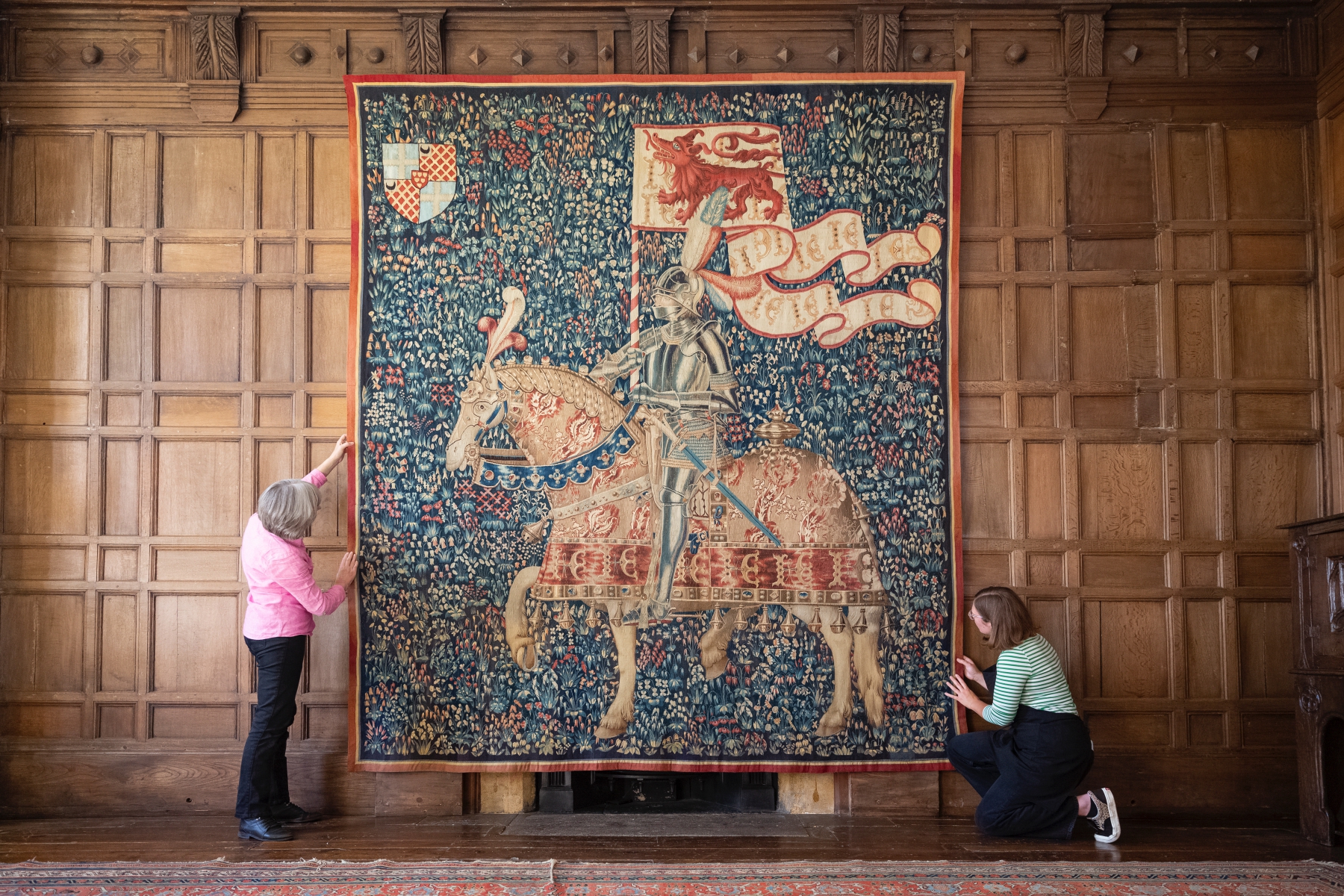
The tapestry, depicting a knight on horseback against a dark blue background covered with a myriad of flowers, is a rare surviving example of a millefleur tapestry. The illustrated knight has been identified as Jean de Daillon, a French nobleman and friend of King Louis XI.
The tapestry was woven in 1477 in the workshop of Guillaume Desremaulx, in the town of Tournai. Being originally part of a much larger set, this tapestry is now the only one surviving and was likely much larger in size. Extensive reweaves around all edges and the shield indicate that it has been reduced in size.
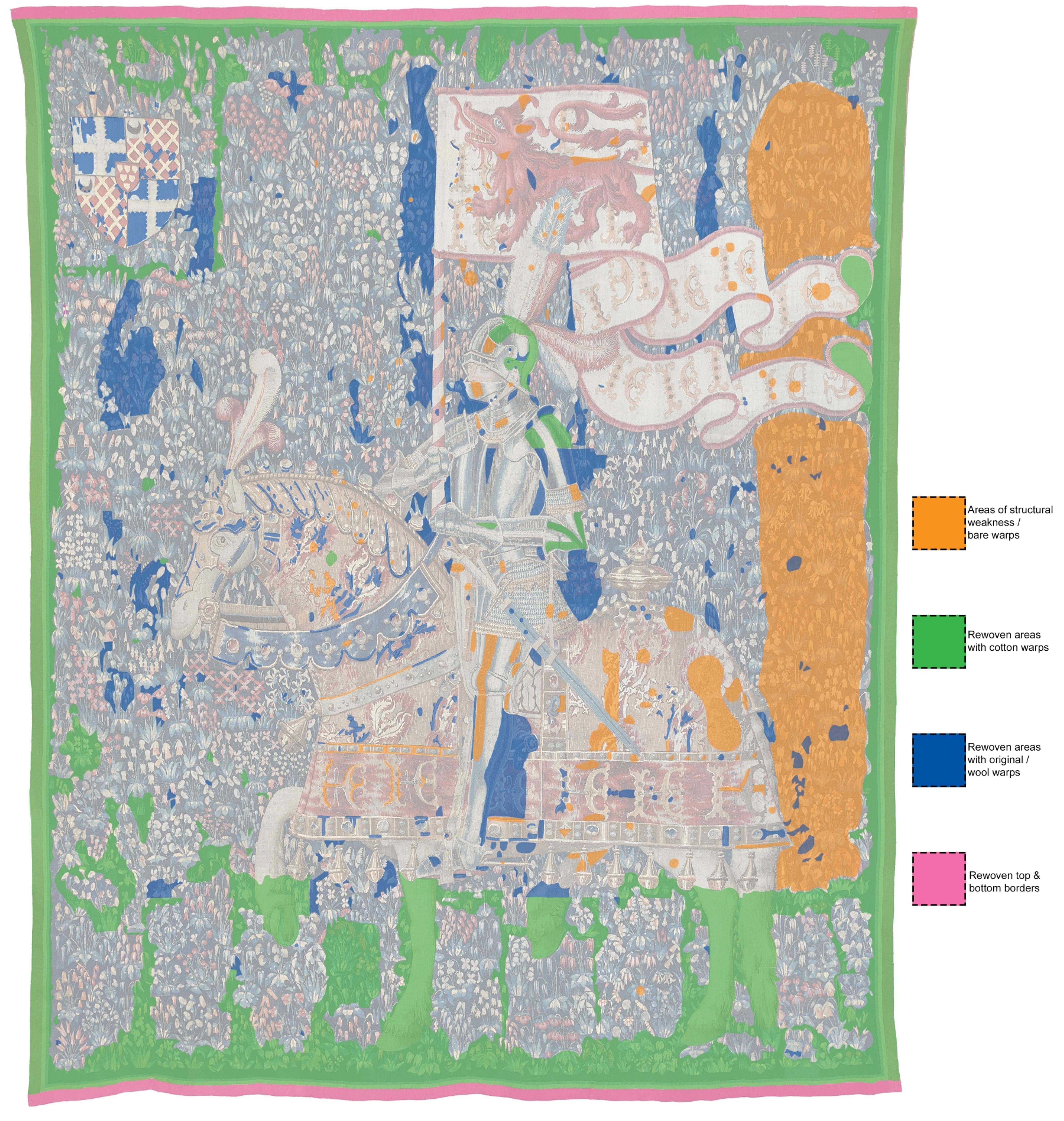
In 2018, the tapestry came to the Textile Conservation Studio for much-needed conservation treatment. It was last worked on approximately 100 years ago. Opening slits and weakening interlocks had made the tapestry structurally weak, and previous repairs had faded and distorted the design.
First, the lining was removed and the tapestry was thoroughly surface cleaned. Detailed documentation was done on the historic interventions, mapping the extent of the reweaves.
Next, the tapestry was sent to De Wit in Belgium for wet cleaning. Their system of wet cleaning under suction is ideal for this tapestry as the edges were rewoven on cotton warps, whereas the rest of the tapestry has wool warps, and there might be dimensional change between the wool and cotton during wet cleaning.
The wet cleaning was successful; there was no dimensional change, ingrained soiling was removed and the beautifully preserved colours look brighter. However, the colour difference between the original blue background and the rewoven background became more pronounced.
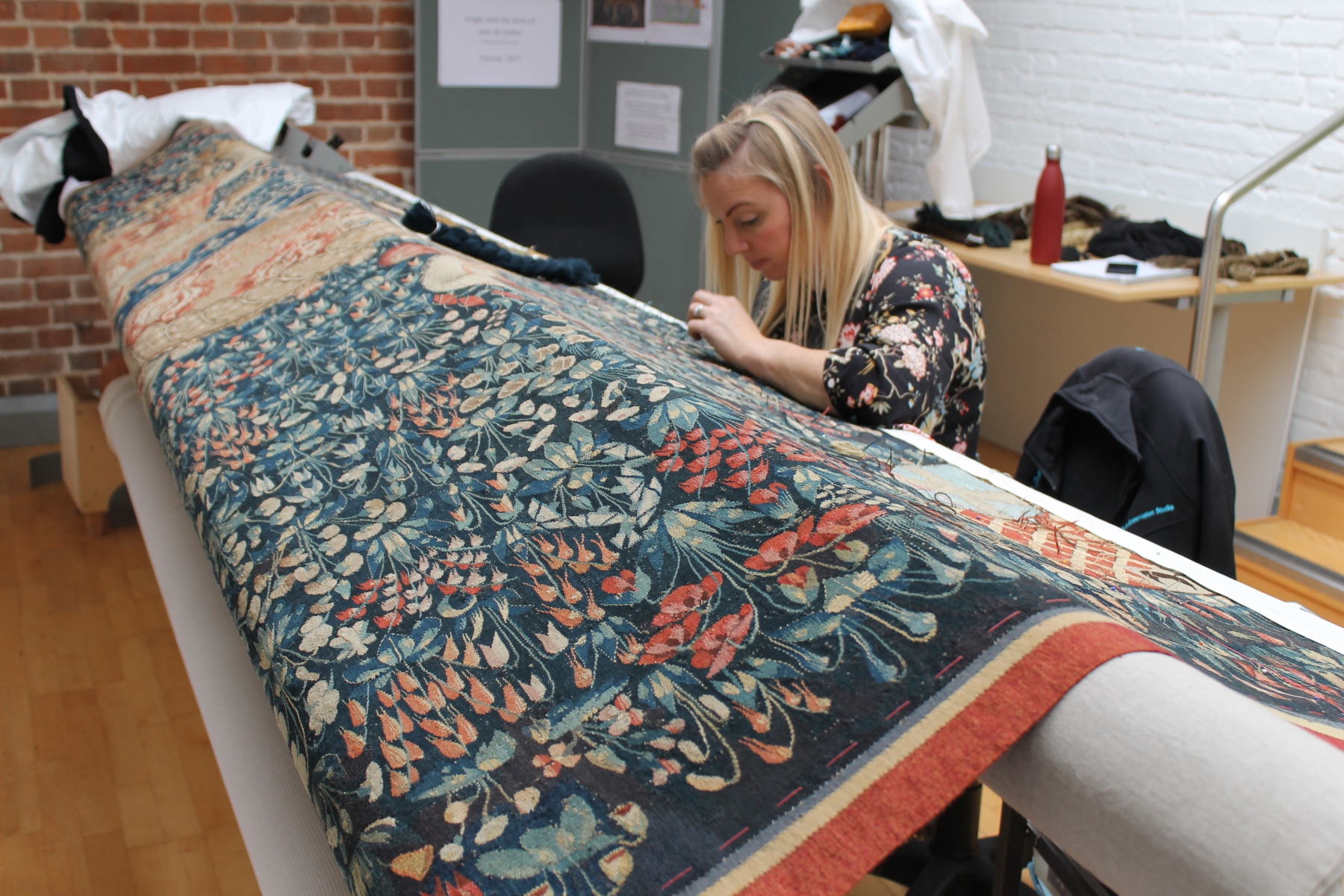
The stitch treatment was carried out on a tapestry frame. The tapestry was supported onto a linen scrim, working 20cm sections at a time. Slits were re-sewn and weak interlocks were re-enforced.
Of the many past repairs, the early repairs were in good condition, but many of the later, more crudely done repairs, had faded. Where these repairs were causing issues or disrupting the design, it was decided to remove them.
In the knight and horse, where many of the original dark wool outlines had been lost and been repaired with crude red/orange wool, it was decided to re-introduce dark lines, with dark brown or black fine wool yarn, where necessary to make the design read better.
After the stitch treatment, a window in the scrim was cut away to reveal the reverse of tapestry for future research. An area in the viewing right lower corner was chosen as it shows the original weave, reweave on cotton warps and faded repairs.
The last stage in the conservation treatment was lining. The reverse of the tapestry was covered with a cotton cambric lining to provide a dust barrier.
In September 2021, the tapestry was rehung at Montacute House in Somerset. The tapestry can now be seen on display again and is one of the spotlighted objects from the National Trust 125 treasures book.
Yoko Hanegreefs

